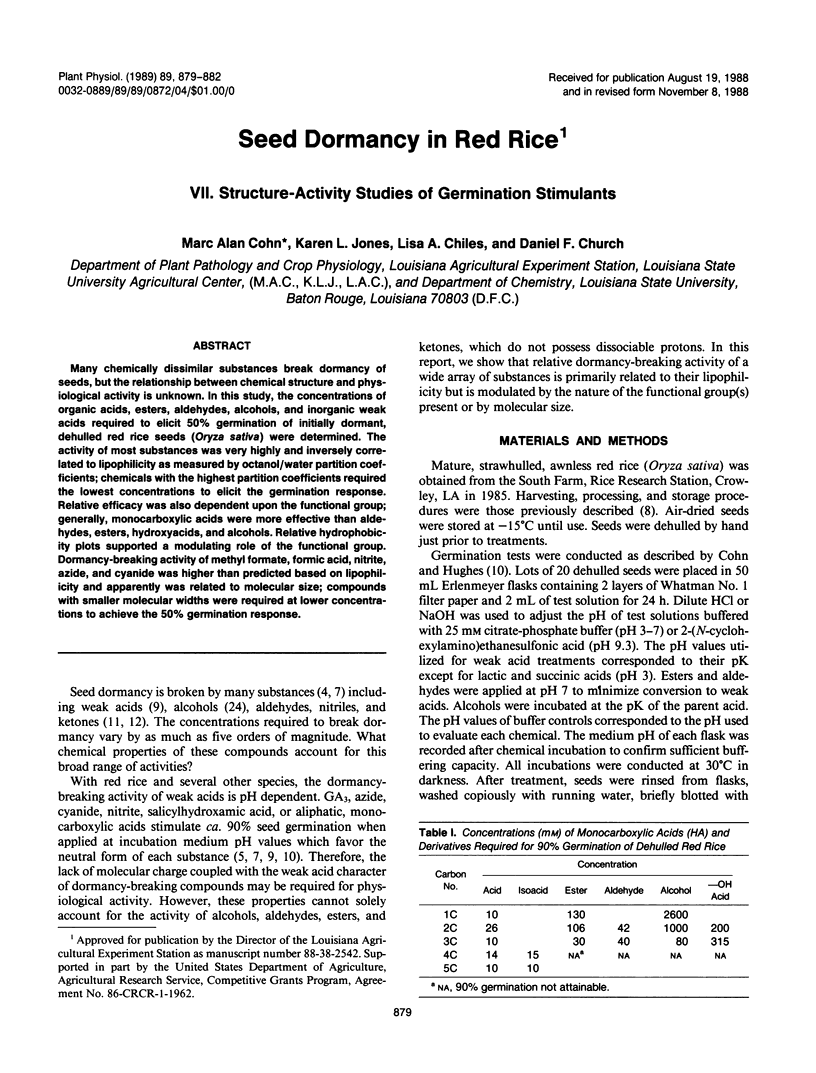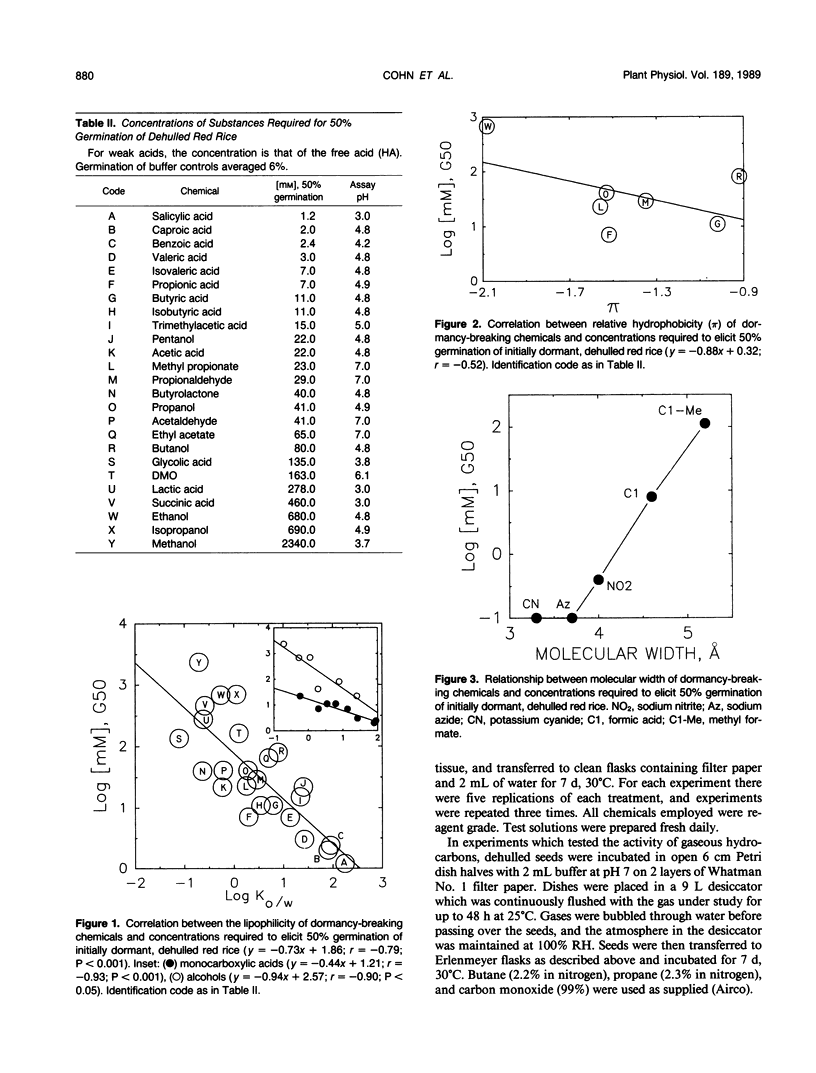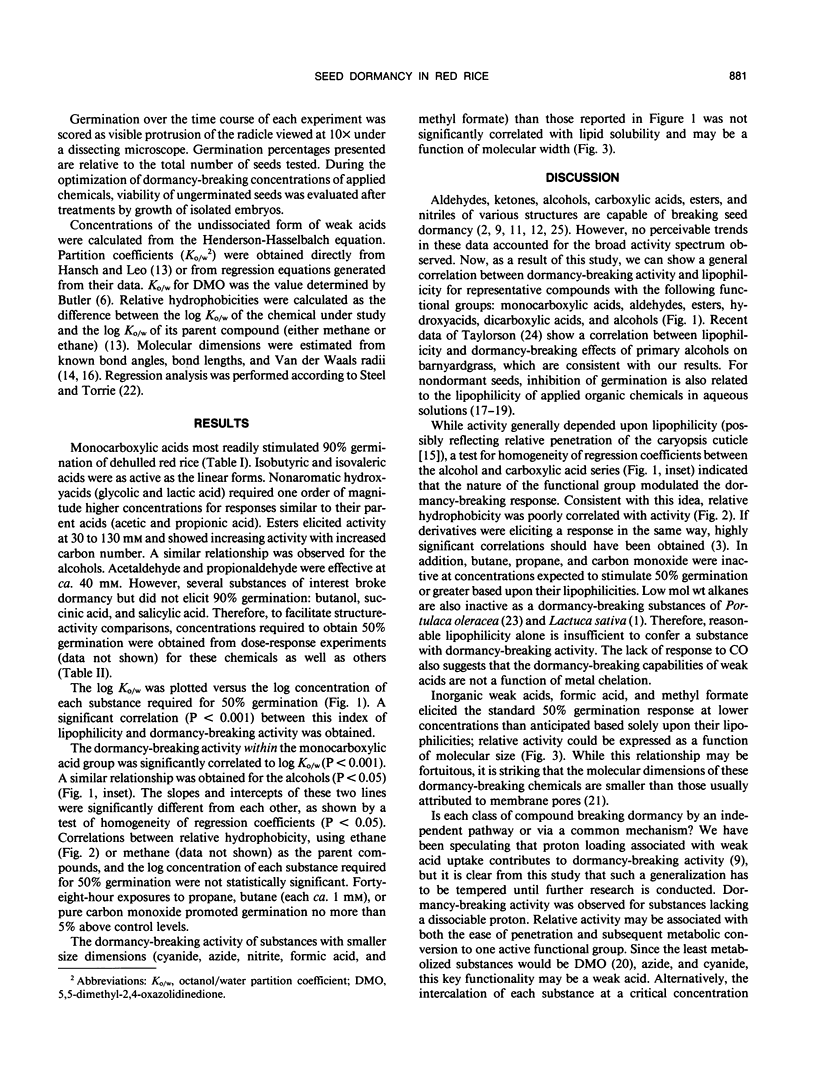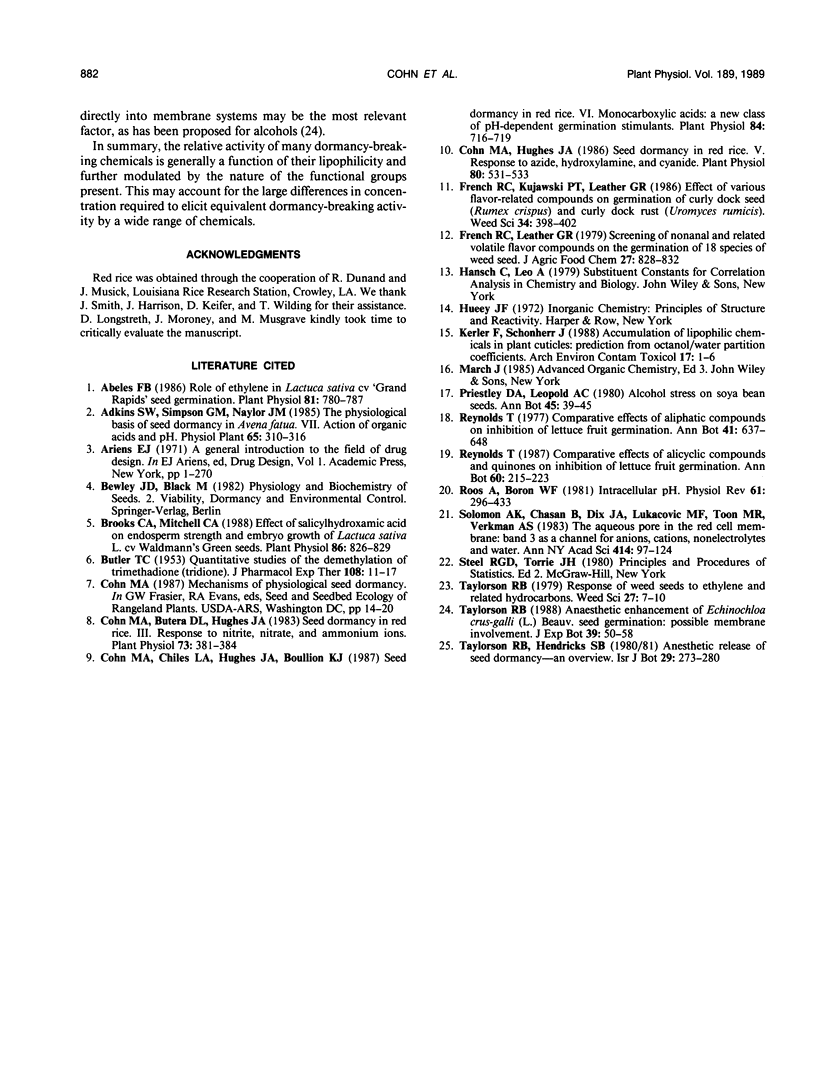Abstract
Many chemically dissimilar substances break dormancy of seeds, but the relationship between chemical structure and physiological activity is unknown. In this study, the concentrations of organic acids, esters, aldehydes, alcohols, and inorganic weak acids required to elicit 50% germination of initially dormant, dehulled red rice seeds (Oryza sativa) were determined. The activity of most substances was very highly and inversely correlated to lipophilicity as measured by octanol/water partition coefficients; chemicals with the highest partition coefficients required the lowest concentrations to elicit the germination response. Relative efficacy was also dependent upon the functional group; generally, monocarboxylic acids were more effective than aldehydes, esters, hydroxyacids, and alcohols. Relative hydrophobicity plots supported a modulating role of the functional group. Dormancy-breaking activity of methyl formate, formic acid, nitrite, azide, and cyanide was higher than predicted based on lipophilicity and apparently was related to molecular size; compounds with smaller molecular widths were required at lower concentrations to achieve the 50% germination response.
Full text
PDF



Selected References
These references are in PubMed. This may not be the complete list of references from this article.
- Abeles F. B. Role of Ethylene in Lactuca sativa cv ;Grand Rapids' Seed Germination. Plant Physiol. 1986 Jul;81(3):780–787. doi: 10.1104/pp.81.3.780. [DOI] [PMC free article] [PubMed] [Google Scholar]
- BUTLER T. C. Quantitative studies of the demethylation of trimethadione (tridione). J Pharmacol Exp Ther. 1953 May;108(1):11–17. [PubMed] [Google Scholar]
- Brooks C. A., Mitchell C. A. Effect of salicylhydroxamic acid on endosperm strength and embryo growth of Lactuca sativa L. cv Waldmann's Green seeds. Plant Physiol. 1988;86:826–829. doi: 10.1104/pp.86.3.826. [DOI] [PMC free article] [PubMed] [Google Scholar]
- Cohn M. A., Butera D. L., Hughes J. A. Seed Dormancy in Red Rice : III. Response to Nitrite, Nitrate, and Ammonium Ions. Plant Physiol. 1983 Oct;73(2):381–384. doi: 10.1104/pp.73.2.381. [DOI] [PMC free article] [PubMed] [Google Scholar]
- Cohn M. A., Chiles L. A., Hughes J. A., Boullion K. J. Seed Dormancy in Red Rice : VI. Monocarboxylic Acids: A New Class of pH-Dependent Germination Stimulants. Plant Physiol. 1987 Jul;84(3):716–719. doi: 10.1104/pp.84.3.716. [DOI] [PMC free article] [PubMed] [Google Scholar]
- Cohn M. A., Hughes J. A. Seed dormancy in red rice : v. Response to azide, hydroxylamine, and cyanide. Plant Physiol. 1986 Feb;80(2):531–533. doi: 10.1104/pp.80.2.531. [DOI] [PMC free article] [PubMed] [Google Scholar]
- Roos A., Boron W. F. Intracellular pH. Physiol Rev. 1981 Apr;61(2):296–434. doi: 10.1152/physrev.1981.61.2.296. [DOI] [PubMed] [Google Scholar]
- Solomon A. K., Chasan B., Dix J. A., Lukacovic M. F., Toon M. R., Verkman A. S. The aqueous pore in the red cell membrane: band 3 as a channel for anions, cations, nonelectrolytes, and water. Ann N Y Acad Sci. 1983;414:97–124. doi: 10.1111/j.1749-6632.1983.tb31678.x. [DOI] [PubMed] [Google Scholar]


